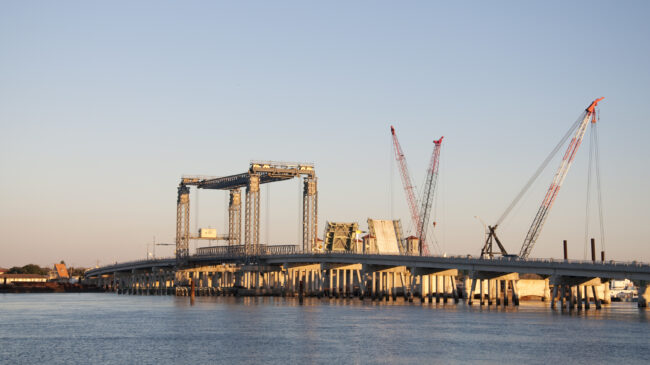Private activity bonds are tax-exempt revenue bonds used to fund needed projects via public-private partnerships. Since the $15 billion public activity bonds (PABs) cap on qualified surface transportation infrastructure projects has been reached, Congress should move to at least double the cap to $30 billion to ensure this valuable financing tool remains available to reconstruct and add capacity to U.S. highways where needed.
Private activity bonds for highway and intermodal projects were first authorized by the Safe, Accountable, Flexible, Efficient, Transportation, Equity Act: A Legacy for Users (SAFETEA-LU). PABs are issued by or on behalf of a government for the purpose of financing projects developed under long-term public-private partnership (P3) agreements. These bonds increase private-sector involvement by enabling private developers/operators to access the same kind of tax-exempt financing available to public-sector projects. This lowers the cost of capital and levels the playing field, allowing P3 projects to be more competitive than would otherwise be the case.
PABs have financed a wide variety of surface transportation projects including Virginia’s I-495 high-occupancy toll (HOT) lanes, the North Tarrant Expressway HOT lanes in Texas, the Goethals Bridge reconstruction in New York-New Jersey, the Pennsylvania Rapid Bridge Replacement Program, and the Portsmouth bypass in Ohio.
In most cases PABs provide financing for 20-30% of the project’s total cost. For megaprojects, $12 billion in private activity bonds led to $45 billion in project activity over the past 15 years. Without PABs many of these projects would not have been feasible.
As part of a compromise when the federal bill including PABs was first authored, the total amount that could be issued was capped at $15 billion. Thanks to recent approvals of $503 million for Georgia’s SR 400 Express Lanes project and $296 million for a Fargo-Moorhead project, the federal cap has been reached.
In the next five years, a Maryland express toll lanes project and Interstate bridge replacements in Alabama, Kentucky, Louisiana, and Oregon could require $5-6 billion in new PABs authorization alone. This doesn’t include any other potential toll-financed Interstate corridor reconstruction or bridge replacement projects. There is clearly a need and the cap should be increased to at least $30 billion.
The biggest impediment to increasing the cap at the momment is the Joint Committee on Taxation (JCT) in Congress. When the committee scored earlier proposals for a $4 billion increase in the cap, it assumed a revenue loss of $25 to $28 million a year. Under long-established scoring rules, the committee makes assumptions on the issuance of the resulting bonds over the following 10 years, and also assumes that many of the projects so financed would otherwise have been completed via taxable bonds. Therefore, the use of PABs would deprive the Treasury of the income taxes paid on those hypothetical taxable bonds. However, if PABs did not exist, megaprojects would likely be financed via tax-exempt municipal bonds, which would lead to the same revenue loss, or not built at all.
Adding $15 billion to the existing private activity bonds cap would be the simplest approach to help spur infrastructure projects. In the context of what could be a $400 billion surface transportation reauthorization bill, which will likely be scored over the bill’s potential five-year life, a JCT score for the first five years might be in the vicinity of $450 million. In some ways given the realities of the massive federal budget, $450 million is a relatively small piece of a a $400 billion surface transportation reauthorization bill. Given that an additional $15 billion in private activity bonds could help fund and leverage $56 billion in new infrastructure investment in much-needed surface transportation projects, raising the cap on private activity bonds should be a congressional priority.

